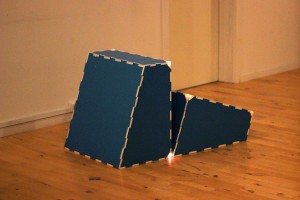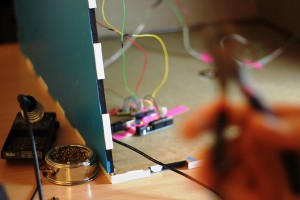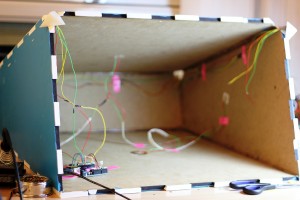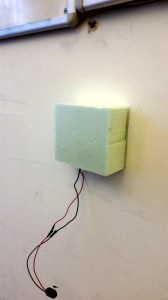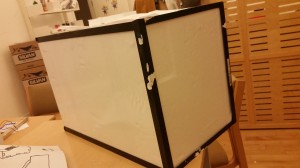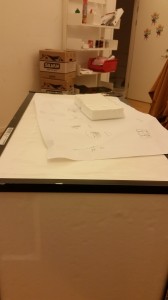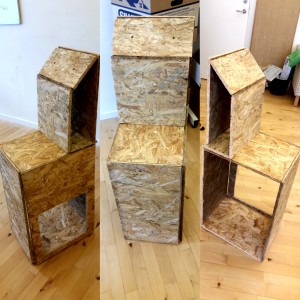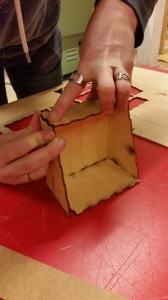“Stjernebakken” (English: The Star Hill) is an interactive urban game for cyclists biking uphill including at least four checkpoints, which give the cyclist visual and auditive feedback on how fast she has covered the distance, and how well she did compared to the average time. The cyclist interacts with the game by biking through clearly marked checkpoints, which works as sensors tracking the individual cyclists.
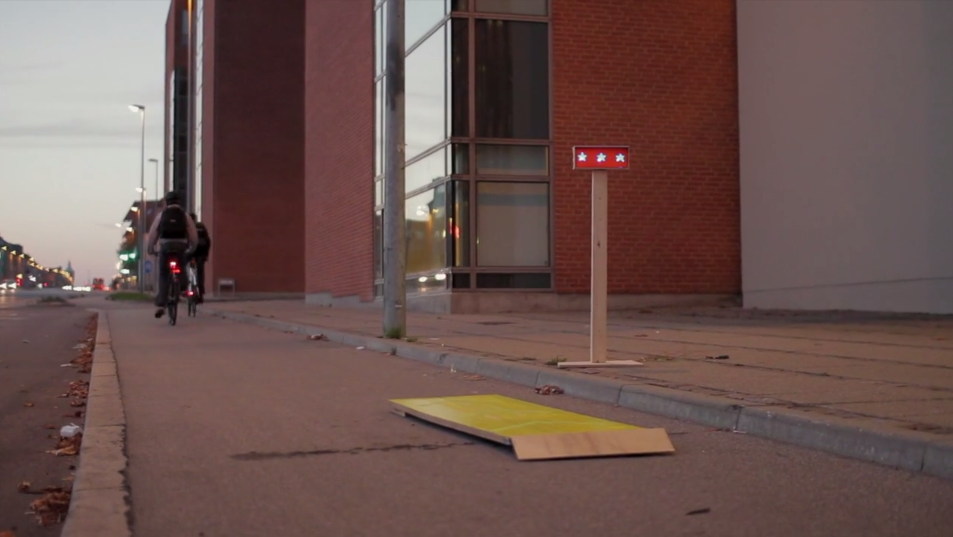
Our first design task at Urban Computing was a two-weeks design project with the aim of testing the design team, our qualities, roles and collaboration.
The design brief included a few constraints;
- use or contribute with open data to/from Open Data Aarhus
- use a physical location within 400 metres from Stjernepladsen, Aarhus N
- specify a target group, that does not coincide with the design team
- include a sensor or actuator in the design
- make it possible for people to contribute with inputs and data
After several qualitative field studies and interview we chose to focus on the cyclists biking uphill towards Stjernepladsen, giving us a design domain of 200 metres of cycle lane with a slope of approx. 10%.

Vision
The design hypothesis is that it is annoying and boring for the cyclist to bike uphill, and therefore our aim is to make the experience of this stretch more positive and surprising by stimulating the cyclist’s senses. Using game elements we aim to move the focus from the annoying hill towards the cyclist’s body performance, hereby making the experience more fun and challenging.
Concept
“Stjernebakken” (English: The Star Hill) is an interactive urban game for cyclists biking uphill including at least four checkpoints, which give the cyclist visual and auditive feedback on how fast she has covered the distance, and how well she did compared to the average time. The cyclist interacts with the game by biking through clearly marked checkpoints, which works as sensors tracking the individual cyclists. The first checkpoint is simply a sign preparing the cyclist for the game. The second checkpoint is the actual starting point of which the time starts running; this is marked by an auditive feedback – the sound of an 8bit “beep”. The third checkpoint shows the cyclist’s performance so far by turning on one, two, or three lightning stars, and playing an 8bit sound. One star means that the cyclist is more than 20% slower than the average, two stars means that the cyclist is doing pretty well keeping up with the average, and three stars means that the cyclist is more than 20% faster than the average cyclist; a real star rider. At the fourth and last checkpoint, the cyclist’s overall performance is presented with a numbers of stars, the overall time, and the average time of the day.
At this point, the cyclist has reached Stjernepladsen, and already covered 200 metres of the annoying hill – without even noticing it;)

Technology
The tracking system at the three checkpoints is developed as self-assembled pressure sensors, which is connected to the computer through Arduino. The input is filtered in Processing, and wireless connected to the two other checkpoints through a server. The output is processed as sound through speakers and through Arduino to super LED’s.
The visual and auditory content is kept in game aesthetics using neon colours, bright wood, 8bit sounds, and game symbols such as stars, arrows, and chess squares.
Perspective
“Stjernebakken” is not a site-specific urban interaction design. The design is developed having Denmark’s special biking culture, and Aarhus’ annoying hills in mind, but the concept can basically be implemented on every annoying hill in the world. We wish to support a growing biking culture in smart cities, and this is a step on the way.
“Stjernebakken” is a playful urban interaction design. The design is meant as a playful experience, rather than as a competitive, effective tool. We wish to support urban play in the ludic city, and see it as a bearing human element in the smart cities.
Check out our concept video and feel free to share insights and critique.




